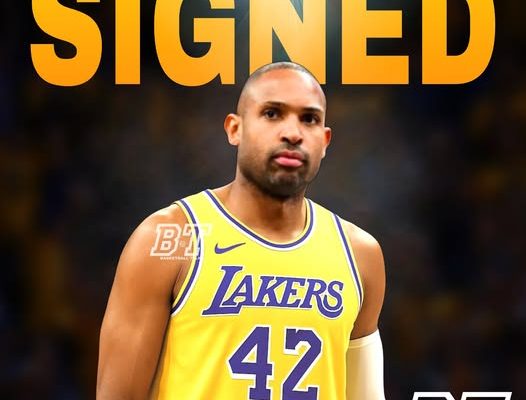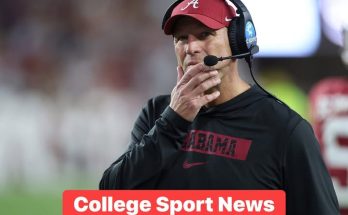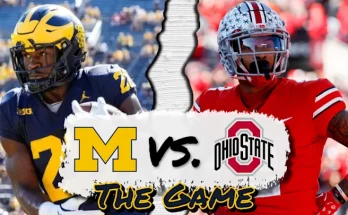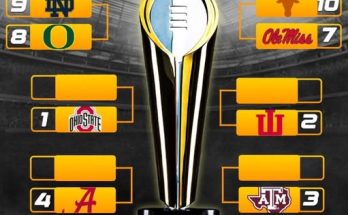Al Horford has signed a one-year deal with the Los Angeles Lakers, marking a bold yet strategic move by the franchise in its continuing effort to build a roster equipped for a deep playoff run. At 39 years old, Horford may no longer be the athletic marvel he once was, but his signing brings with it a trifecta of invaluable traits: leadership, shooting, and playoff-tested experience. For a team aiming to squeeze every ounce of championship opportunity from LeBron James’ final NBA seasons, the addition of Horford is not just a nostalgic footnote—it’s a calculated investment in basketball IQ and stability.
The Lakers are no strangers to veteran acquisitions. Over the past few years, the organization has made it a priority to surround LeBron with experienced role players capable of complementing his skillset and keeping the team afloat during the regular season grind. With Al Horford now in purple and gold, the franchise gains a frontcourt presence who has quietly been one of the most consistent two-way big men of his generation. He may not fill the stat sheet like he did during his All-Star days in Atlanta, but his impact remains subtly transformative—especially in high-stakes basketball.
Horford’s primary appeal at this stage in his career isn’t athleticism or explosive scoring—it’s his reliability. With nearly two decades of NBA experience, he’s learned how to pick his spots, conserve energy, and deliver at crucial moments. This was on full display during his final years in Boston, where he served as the stabilizing veteran presence among a younger core that included Jayson Tatum and Jaylen Brown. His ability to stretch the floor, defend multiple positions, and communicate on both ends made him an integral part of the Celtics’ identity.
What makes this Lakers stint particularly compelling is the team context into which Horford is walking. LeBron James is expected to return for his record-setting 23rd season, and Anthony Davis remains the cornerstone of the team’s defensive identity. But behind those two lies a murky mix of frontcourt depth. The Lakers were often forced to rely on undersized lineups or inexperienced bigs in the 2024-25 season. Horford offers a different kind of solution—a smart, floor-spacing big who can operate beside Davis or even anchor second-unit lineups when Davis rests.
His shooting is perhaps his most underappreciated asset. Horford has transformed himself into a reliable three-point threat in the later stages of his career. In his final full season with the Celtics, he shot over 40% from deep, mostly from above the break and in pick-and-pop scenarios. This floor spacing is invaluable on a team with LeBron, whose driving lanes become exponentially more effective when surrounded by capable shooters. Slotting Horford into lineups that already feature players like Austin Reaves or D’Angelo Russell opens up a world of offensive spacing possibilities.
Defensively, Horford brings cerebral positioning and vocal leadership—both of which are vital in playoff environments where every possession matters. While he may no longer be quick enough to switch consistently onto guards for long stretches, he remains adept at drop coverage, help-side rotations, and walling off drives. His presence also reduces the need for Anthony Davis to shoulder an overwhelming defensive load throughout the regular season, which could help preserve Davis’s body for a playoff push.
From a leadership standpoint, Horford’s reputation is unimpeachable. Teammates and coaches alike frequently cite his professionalism, work ethic, and steady demeanor as foundational elements of team culture. In a locker room that includes LeBron James, that might seem redundant—but LeBron’s leadership is more demonstrative and on-court driven, whereas Horford offers quiet mentoring, particularly for younger players trying to find their footing in a pressure-filled environment like Los Angeles.
The move also signals a subtle shift in team philosophy under new head coach JJ Redick. Redick, a former sharpshooting guard turned media personality and now first-time head coach, has made it clear he wants a modern, high-IQ offense that emphasizes spacing, ball movement, and situational awareness. Horford, who played under Brad Stevens and Ime Udoka—both of whom champion similar basketball philosophies—should feel right at home. His ability to function as a high-post distributor, dribble hand-off facilitator, and pick-and-pop outlet makes him an ideal tactical piece in a Redick-designed offense.
Moreover, Horford’s arrival offers flexibility in managing the wear and tear on the roster. In an 82-game season filled with back-to-backs and extended road trips, having a veteran who knows when to dial it back and when to ramp it up becomes essential. The Lakers may opt to rest Horford strategically during the regular season, not unlike how they managed LeBron and Davis in prior years. The real value comes in April, May, and potentially June—when the game slows down, and experience becomes the greatest asset of all.
There are, of course, potential pitfalls. At 39, Horford’s durability is not what it once was, and any long stretch of injury could limit his impact. Additionally, there’s the risk that his age and declining foot speed may make him a defensive liability against quicker, more athletic lineups. But these concerns are offset by the short-term nature of the deal and the specific role he’s expected to play. The Lakers aren’t asking Horford to be a 30-minute-per-night starter—they’re asking him to be a glue guy, a floor spacer, and a locker room anchor.
In fact, Horford’s one-year contract speaks volumes about both his expectations and the Lakers’ vision. This is a “win-now” signing in the truest sense. It’s not about long-term development or building for a future run—it’s about winning in 2026 while LeBron is still capable of delivering elite basketball. Every move the Lakers make this offseason will be filtered through that lens, and bringing in Horford aligns with that mission.
It’s also worth considering what this means for the rest of the Lakers’ frontcourt. Players like Jaxson Hayes and Rui Hachimura may now find their roles adjusted. Horford’s presence allows for more strategic deployment of Davis at power forward, where he has historically preferred to play, rather than always serving as the team’s primary center. This could increase lineup versatility and help maintain a consistent identity regardless of injuries or matchups.
The cultural fit is important, too. Horford is known for his professionalism and humility, which bodes well in a media circus like Los Angeles. The Lakers often find themselves under a magnifying glass—one misstep, one controversy, one bad week, and the headlines explode. Having calm, level-headed veterans like Horford can prevent the locker room from imploding under external noise.
This also adds an emotional layer to Horford’s career arc. After years of falling just short of a title—especially with the Celtics—it would be poetic to see him finally secure a championship ring, even if it comes wearing the colors of his former rival. While Celtics fans may feel a pang of betrayal, most understand this is a professional decision driven by the pursuit of basketball immortality. The ring is the only thing missing from Horford’s Hall of Fame résumé.
So while this signing might not dominate the sports headlines like a blockbuster trade or a max contract extension, it may quietly become one of the most important moves of the Lakers’ offseason. Al Horford is not a savior, and he’s not expected to be. But he is a difference-maker—the kind of player who understands his role, executes it flawlessly, and elevates those around him.
In a league increasingly defined by versatility, spacing, and veteran poise, Horford remains a quietly elite option. For the Lakers, who continue to chase banner number 18, this addition may be a crucial step in turning potential into reality. Al Horford’s final NBA chapter is officially underway—and he’s writing it under the bright lights of Los Angeles.



